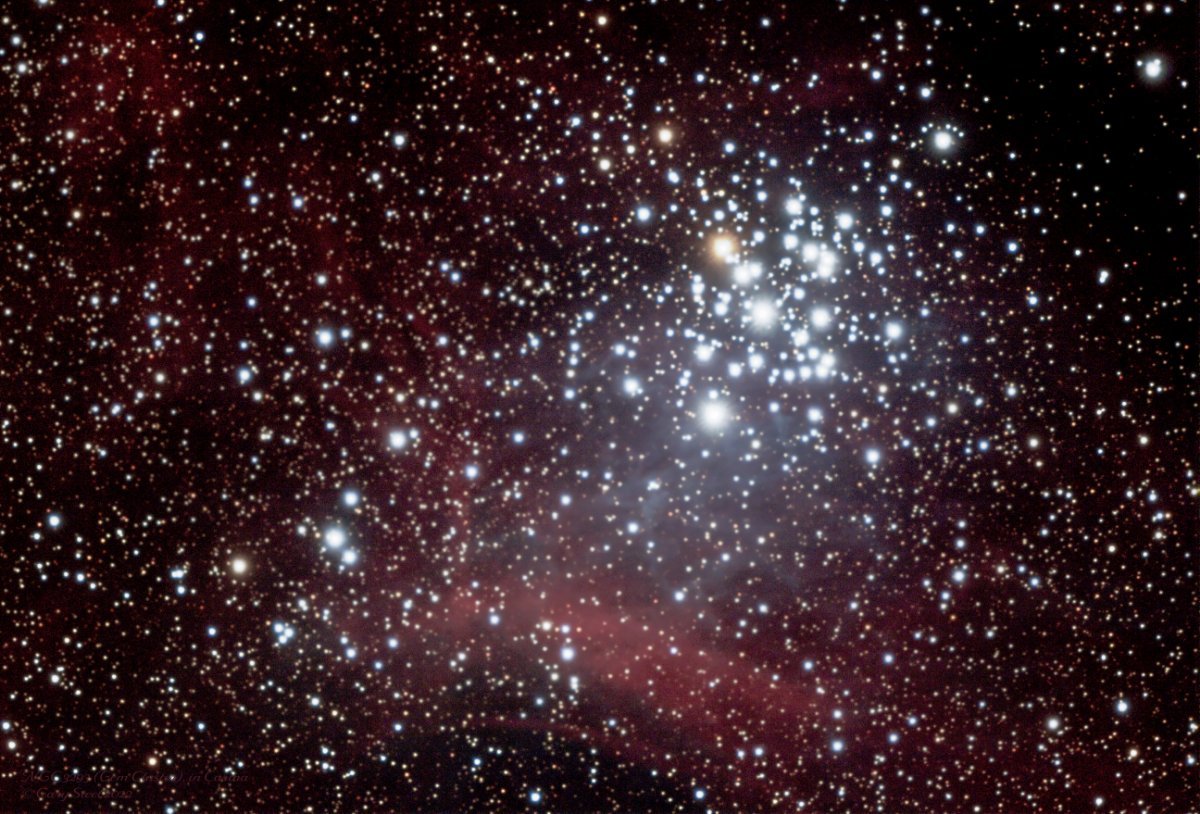This is the first image I produced after taking 14 months “off” for pandemic lockdowns, two major injuries, the demands of earning a living, and a keen desire to see if sleep was as highly rated as people seem to think (nope). I chose NGC 3293 – The Gem Cluster – as my get-back-to-it target because it is relatively easy for data acquisition and I needed to brush up those skills. As it turned out, the seeing was less than perfect that night so data acquisition and post-processing were a bit more challenging than usual. Ah, well.

The Gem Cluster is a pretty, wee family of stars located in Carina, and is about 8400 light-years distant. With an apparent magnitude of 4.7, it is easily visible with the naked eye or binoculars from a dark(-ish) location. Look for a small patch of stars about 2 degrees northwest - celestially speaking - of the Eta Carina Nebula (NGC 3372). There are over 100 stars in the cluster; most of those in the foreground of this image are B-type blue giants. The notable exception is V361, an M-class red supergiant visible just to the right and up from the centre of the image. The cluster, by astronomical standards, is quite young; a mere 8.5 million years old or so.
Date: 02 March 2022
Constellations: Carina
R.A.: 10h 35m 41s
Dec.: -58° 41' 23.5"
Photo stuff: 40 subs@180s ea.; ISO 800; Canon 60Da on Meade RCX400 16” f/8 telescope
